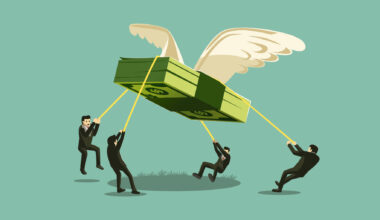Pandemic, cultural and working practices changed forever, supply chain disruptions impacting food production, war in Europe. Sound familiar? Well, this is an accurate description of Europe and the Middle East in the 6th century AD, during and after the Justinian Plague.
High inflation, a slowing economy, rising inequality, speculative asset bubbles crashing, and, of course, war in Europe. Sound familiar? This could be a description of the British economy during the Napoleonic wars, or the US in 1825, or in 1875, or the US in the 1970s, in fact every modern economy in the world has been in this situation multiple times.
Is the moment we are living through now especially uncertain? We would contend that the answer is a firm ‘no’!
Times are always uncertain. Recency bias, the behavioural bias which means humans tend to overweight the importance of more recent events, is partly to blame for the belief that now, whenever now is, is an especially unique moment in history, where uncertainty really is exceptionally high compared to the past.
Not too many Roman citizens in the 2nd century AD would have predicted the complete collapse of what was, at the time, the most powerful Empire in history. Neither would many of their contemporaries in 18th century England have predicted the imminent Industrial Revolution. 9/11, Pearl Harbour, we live in a world which is incredibly hard to predict. We would contend, it is impossible to predict at a macro level.
Uncertainty is almost like a drug in modern society today, the drug that fuels the fear which keeps modern 24-hour news cycles going, not to mention social media news feeds. If only we can get past this next crisis, then things will be stable and predictable! Ah, but of course, once the current crisis is behind us, lo and behold, a new crisis is discovered, which must be overcome, and the never-ending cycle repeats.
We recommend a radical approach to living in an uncertain world. Embracing uncertainty.
Acknowledgement and acceptance of the world as it is, rather than how we wish it to be, is the first step to successfully adapting to, and thriving in it. Uncertainty is core to the universe we live in. Things will always be unpredictable, we will never have certainty, in life as also in investing.
In investment markets uncertainty manifests as volatility. If there were no uncertainty, prices of assets would never move! Everything would be known and as such, there would be no need for prices of any investment assets to change.
We contend that trying to fight uncertainty is a little bit like trying to fight a war on two fronts, a very bad idea. Financial markets and the media are full of experts making predictions about inflation, GDP growth, political trends, etc. These are, we contend, effectively a waste of time from the perspective of investors. The radical truth is that nobody knows what will happen at a macro level. The world is highly uncertain.
How then, do you invest for the long-term if the long-term is so unpredictable?
Market volatility, or put more simply: changes in prices, is our friend here. Embracing uncertainty means embracing volatility. It is volatility in prices, driven by the fear of market participants reacting to uncertainty, which offers the patient investor the opportunity to make investments irrespective of the prevailing uncertainties of the time.
These are investments in companies, sectors, asset classes, sometimes specific countries, where the price of the assets in question do not reflect their true value. These are sometimes investments where the quality of the asset is something we can understand, and although we cannot predict with absolute certainty the future of this specific asset or business, we can make conclusions as investors with high degrees of confidence about the quality of the asset and, at the very least, the most likely trajectory for that business.
Will inflation rise or fall? Will there be a recession in Europe in the next 12 months? Highly unpredictable. We do not know, no one does.
Will the world’s leading digital advertising business, with a strong balance sheet, high profit margins and trading on a stock valuation 50% below the market average, continue to generate strong cash flows for the next 10 years? Probably. And if a high-quality asset like this is trading at its lowest valuation ever, that is probably enough for the long-term investor.
Embracing uncertainty means knowing what we can know and knowing what we will never know. For investors it means focussing on what you can know, with some confidence, and marrying this much narrower focus of expertise with a strategy to take advantage of opportunities provided by volatile markets.
In this sense volatility, and uncertainty, are our friends as investors, if we know how to handle them right.
Disclaimer: The views expressed in this article are those of the author at the date of publication and not necessarily those of Dominion Capital Strategies Limited or its related companies. The content of this article is not intended as investment advice and will not be updated after publication. Images, video, quotations from literature and any such material which may be subject to copyright is reproduced in whole or in part in this article on the basis of Fair use as applied to news reporting and journalistic comment on events.


